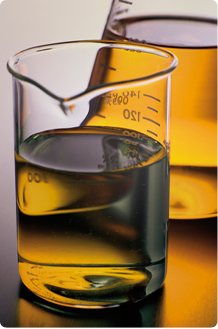Uniform scale removal

DEEPA scale removal treatments are ideal for aging assets with reduced production rates due to scale deposition and formation damage as water production increases.
Typical oilfield scales include calcium, magnesium and barium salts of carbonate or sulphate and can be deposited in the perforations and production tubing anywhere from downhole to the surface facilities or in the formation itself, causing damage. When scale has formed in the production tubing or near the wellbore formation it is advantageous to remove it. Acid soluble scales such as calcium or magnesium carbonate can be dissolved with acid. Conventionally this is done using concentrated hydrochloric acid and has the usual drawbacks including: HSE risk, placement problems, damage to equipment and tubulars, addition of toxic corrosion inhibitors, and disposal costs.
DEEPA scale removal treatments are highly effective and achieve optimal fluid placement without high pump rates due to the advantages of in-situ acid generation. With low corrosivity they do not require corrosion inhibitors so avoid damage to tubulars and completions.
It is possible to combine in-situ acidizing with speciality surfactants to solubilise the hydrocarbon component of oilfield scale. This provides a low hazard, single stage treatment that is easy to deliver and that minimizes issues regarding disposal of the spent fluid.
DEEPA scale removal treatments are simple to use, mix and pump with standard oilfield equipment. They are non-hazardous and remove hazardous materials from inventory, trucking and well-site which reduces the HSE risk and protects the asset, company and contractor personnel as well as the environment.
DEEPA scale removal treatments often increase production by up to 50% or more by optimizing zonal coverage and achieve uniform radial and longitudinal fluid placement throughout the target zone.
